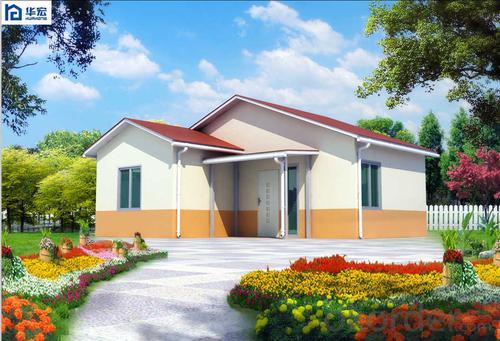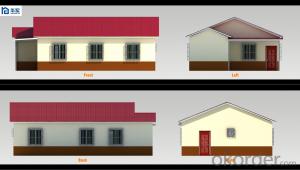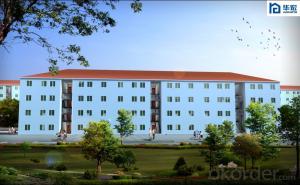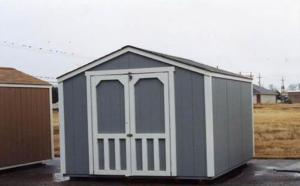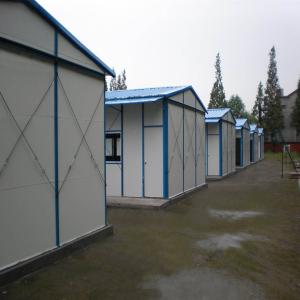High quality cement house
- Loading Port:
- China Main Port
- Payment Terms:
- TT OR LC
- Min Order Qty:
- -
- Supply Capability:
- -
OKorder Service Pledge
OKorder Financial Service
You Might Also Like
More questions:
1, What's your Payment term:
30% deposit by TT, 70% balance before loading container by TT; 100% LC at sight(total payment over 100,000USD);
2, How about Shipping:
We use 20 feet container and 40HQ container to ship the goods; Usually one 20 feet container can load about 50-60 square meters' house, 40HQ container can load about 120-140 square meters's house.
3, How to become your agent in our country:
First, you can make a report about your market, include the the rules and laws of prefab house, popular house models, target price, and potential sales quantity.
Second, you must place a trial order to act as the display.
Third, after finishing the sample house and getting the local people's feedback, we will give you the agent right in one area with limited time.
Fourth, Please note that we already have agent in Mumbai City India; Marshall Islands, Trinidad and Tobago.
4, Can you help me to purchase other things like furniture or appliance:
Because the customs law, our company can only export prefab house, so we just can purchase very little matched kitchen and bathroom facilities for you in consideration of customs clearance.
5, Can you send workers to help me build house.
Considering the labor cost, safety and visa issues, we suggest to send one or two engineers to guide and train your staffs. You must provide air tickets, hotel, and meal, and 100USD per day for engineer salary.
- Q: Can container houses be designed with a rooftop deck or terrace?
- Yes, container houses can definitely be designed with a rooftop deck or terrace. In fact, one of the advantages of using shipping containers as building units is their inherent strength and versatility, which allows for various innovative designs. By utilizing the flat surface of the container's roof, it can be transformed into an outdoor living space, such as a deck or terrace. This can provide homeowners with additional usable space, allowing them to enjoy outdoor activities and take advantage of panoramic views. However, it is important to consider the structural implications and ensure that the container house is designed and reinforced properly to support the additional weight and stress of a rooftop deck or terrace.
- Q: Can container houses be built with a home workshop or hobby space?
- Yes, container houses can definitely be built with a home workshop or hobby space. In fact, the modular nature of container houses makes them highly customizable and adaptable to various purposes, including creating dedicated spaces for hobbies and workshops. With proper planning and design, containers can be transformed into functional and comfortable spaces for pursuing hobbies like woodworking, painting, or crafting. One advantage of using containers for creating a workshop or hobby space is their structural strength. Containers are designed to withstand extreme weather conditions and can be easily modified to accommodate heavy equipment and tools. Additionally, containers can be stacked or arranged in various configurations to create multi-level spaces, allowing for more efficient use of space. To convert a container into a workshop or hobby space, some modifications may be necessary. These modifications can include adding windows for natural light, insulation for temperature control, electrical wiring for lighting and power outlets, and ventilation systems to ensure proper air circulation. It is also essential to consider the specific requirements of the hobby or workshop and incorporate storage solutions, workbenches, and other necessary equipment to create a functional and organized space. Furthermore, container houses offer the convenience of mobility. If you have a home workshop or hobby space in a container, it can be easily transported to a different location if needed, making it ideal for individuals who may need to relocate or for those who prefer a flexible living arrangement. In conclusion, container houses can indeed be built with a home workshop or hobby space. The versatility and durability of containers allow for the creation of functional and customized spaces that can cater to various hobbies and workshops. With proper planning and modifications, container houses can provide a comfortable and convenient environment for pursuing your passions.
- Q: Do container houses require permits for construction?
- Permits are usually necessary for constructing container houses. The permits needed may differ based on local building codes and regulations. Container houses are often regarded as unconventional housing options in many areas, therefore specific regulations and requirements must be fulfilled to obtain the necessary permits. It is crucial to consult the local building department or planning commission to ascertain the specific permits and approvals needed for constructing container houses in your area. This will guarantee that your project complies with all relevant regulations, building codes, and zoning restrictions.
- Q: What is the average lifespan of a container house?
- The duration of a container house's life can vary based on several factors. Generally, container houses are constructed from shipping containers that are specifically designed to endure the challenges of international shipping for approximately 10-15 years. Nevertheless, with adequate upkeep and improvements, a container house can endure much longer. To prolong the lifespan of a container house, one can reinforce the structure, insulate and weatherproof the interior, and regularly maintain the exterior. Moreover, the quality of the container and the construction techniques implemented can also influence its longevity. With proper care, some container houses have been known to last for 50 years or more. Nevertheless, it is important to acknowledge that elements such as climate, location, and usage can also impact a container house's lifespan. In conclusion, although the average lifespan of a container house is estimated to be around 10-15 years, this duration can be significantly extended through proper maintenance and renovations.
- Q: Are container houses resistant to natural disasters?
- The level of resilience of container houses in the face of natural disasters depends on various factors. They have a main advantage in their structural strength, as they are constructed using sturdy steel containers that can withstand rough handling during transportation. This strength makes them resistant to certain natural disasters like earthquakes and high winds. Container houses also possess fire resistance due to the high melting point of the steel material used in their construction. This feature is particularly beneficial in areas prone to wildfires or accidental fires. However, container houses may not be as resistant to other types of natural disasters, such as flooding. This is because they are typically placed on a foundation close to the ground. In areas with a high risk of hurricanes or extreme weather conditions, additional reinforcements and modifications may be necessary to ensure the safety of the house. Moreover, the quality of construction and the expertise of the builders play a significant role in determining the level of resistance to natural disasters. Proper planning, engineering, and adherence to building codes and regulations are crucial to maximize the resilience of container houses. In conclusion, while container houses can offer some resistance to certain natural disasters, it is essential to consider the specific risks and requirements of the location. Seeking advice from professionals and implementing appropriate measures can enhance the safety and resilience of container houses in the face of natural disasters.
- Q: Can container houses be financed through mortgages?
- Yes, container houses can be financed through mortgages. Just like traditional houses, container houses can be considered real property and thus qualify for mortgage financing. However, the availability of mortgage options may vary depending on the specific circumstances, location, and lender's policies. It is advisable to consult with lenders or mortgage brokers who specialize in alternative housing options to explore the financing possibilities for container houses.
- Q: Can container houses be designed with off-grid wastewater treatment systems?
- Yes, container houses can be designed with off-grid wastewater treatment systems. These systems can include various methods such as composting toilets, greywater recycling systems, or septic tanks. By implementing these off-grid wastewater treatment systems, container houses can effectively manage and treat their wastewater without relying on traditional infrastructure or utilities.
- Q: Can container houses be designed to have a guest room?
- Yes, container houses can be designed to have a guest room. The modular nature of container houses allows for flexibility in design, making it possible to include separate spaces for guests within the overall layout. Additional containers can be added or modified to create a comfortable and functional guest room, ensuring that visitors have a pleasant stay.
- Q: Can container houses be designed with multiple floors?
- Yes, container houses can be designed with multiple floors. While the basic structure of a container is typically designed to be stacked horizontally, it is possible to modify and stack them vertically to create multi-story container houses. This can be achieved by reinforcing the containers and adding additional structural supports to ensure stability and safety. By stacking the containers, it is possible to create multiple levels within the house, providing more living space and allowing for a variety of room configurations. However, it is important to work with a professional architect or engineer who has experience in designing multi-story container houses to ensure proper structural integrity and compliance with building codes and regulations.
- Q: Are container houses suitable for areas with high winds?
- Areas with high winds can be suitable for container houses, given proper design and construction to withstand these conditions. The modifications made to the original container and the foundation it rests upon greatly influence the structural integrity of the house. To enhance wind resistance, one can reinforce the structure by adding braces or welding extra steel beams to the container walls or roof. Additionally, securing the container to its foundation with hurricane straps or anchor bolts can prevent it from being lifted or blown away during strong winds. Considering the location and orientation of the container house is essential. Placing it in a wind-protected area, such as behind natural windbreaks like hills or trees, can mitigate the impact of high winds. Properly positioning the entrance and windows can also reduce the risk of wind damage. The choice of materials for insulation and cladding is another factor influencing wind resistance. Opting for resilient materials like reinforced concrete panels or fiber cement siding can provide an extra layer of protection against high winds. Ultimately, container houses can be suitable for high-wind areas, but it is vital to collaborate with experienced professionals who understand the unique challenges posed by the local climate. By carefully considering design, construction, and location factors, container houses can offer a secure and comfortable living space even in regions prone to strong winds.
Send your message to us
High quality cement house
- Loading Port:
- China Main Port
- Payment Terms:
- TT OR LC
- Min Order Qty:
- -
- Supply Capability:
- -
OKorder Service Pledge
OKorder Financial Service
Similar products
Hot products
Hot Searches

